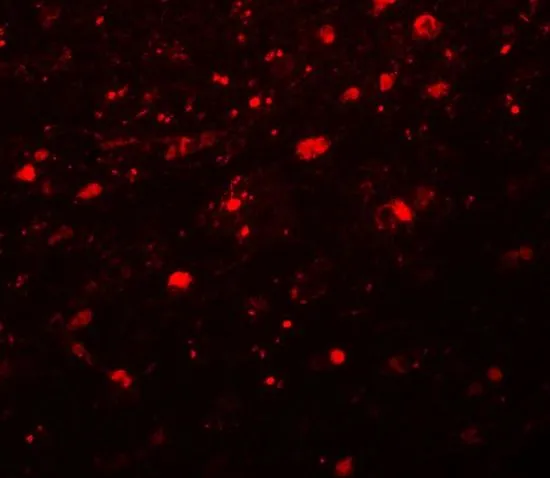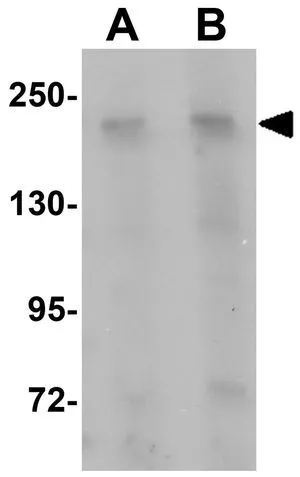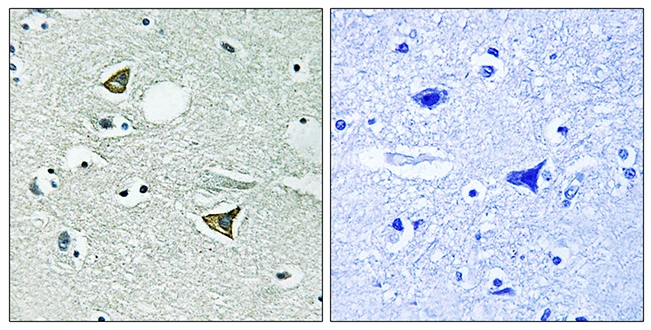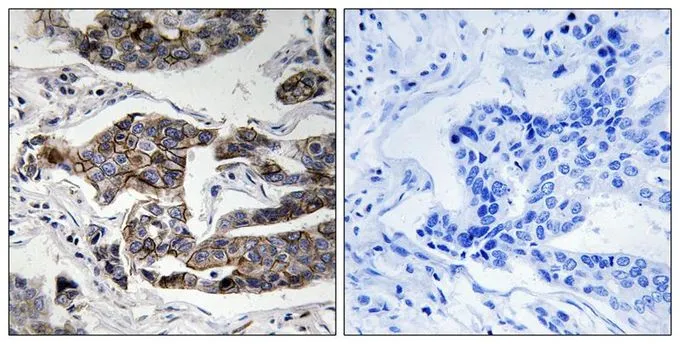
IHC-P analysis of human brain tissue using GTX85215 Girdin antibody. Working concentration : 20 microg/ml
Girdin antibody
GTX85215
ApplicationsWestern Blot, ELISA, ImmunoHistoChemistry, ImmunoHistoChemistry Paraffin
Product group Antibodies
TargetCCDC88A
Overview
- SupplierGeneTex
- Product NameGirdin antibody
- Delivery Days Customer9
- Application Supplier NoteWB: 1 - 2 microg/mL. IHC-P: 20 microg/mL. *Optimal dilutions/concentrations should be determined by the researcher.Not tested in other applications.
- ApplicationsWestern Blot, ELISA, ImmunoHistoChemistry, ImmunoHistoChemistry Paraffin
- CertificationResearch Use Only
- ClonalityPolyclonal
- Concentration1 mg/ml
- ConjugateUnconjugated
- Gene ID55704
- Target nameCCDC88A
- Target descriptioncoiled-coil and HOOK domain protein 88A
- Target synonymsAPE, GIRDIN, GIV, GRDN, HkRP1, KIAA1212, PEHO, PEHOL, girdin, AKT-phosphorylation enhancer, Hook-related protein 1, coiled-coil domain containing 88A, g alpha-interacting vesicle-associated protein, girders of actin filaments
- HostRabbit
- IsotypeIgG
- Protein IDQ3V6T2
- Protein NameGirdin
- Scientific DescriptionGirdin is a Galpha-interacting protein that can enhance the activation of the protein kinase Akt, remodel the actin cytoskeleton, and is thought to be involved in the regulation of cell migration and cancer metastasis. It has recently been shown that Girdin interacts with Disrupted-in-Schizophrenia 1 (DISC1), a susceptibility gene for major psychiatric disorders. DISC1 is thought to be involved in the migration, positioning and differentiation of dentate granule cells (DGCs) during development; depletion of Girdin or blocking the Girdin-DISC1 interaction results in defects in axonal sprouting in the CA3 region of the hippocampus and overextended migration of mispositioning of DGCs, suggesting the Girdin plays a role in postnatal neurogenesis in the dentate gyrus.
- Storage Instruction-20°C or -80°C,2°C to 8°C
- UNSPSC12352203









